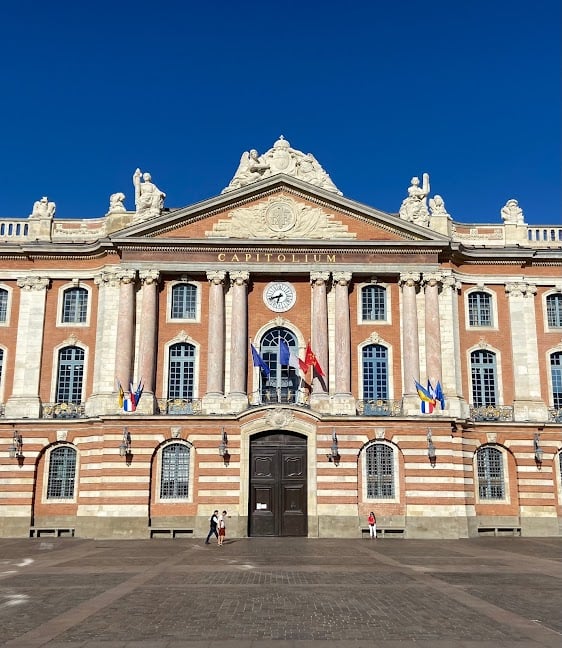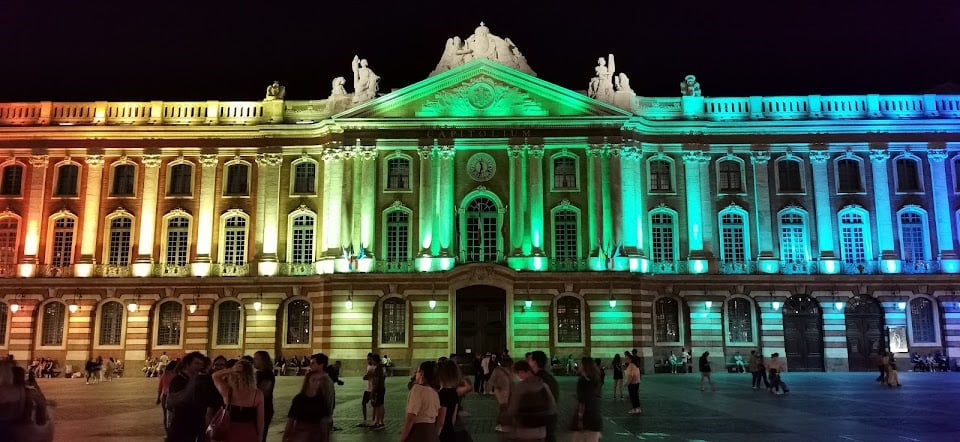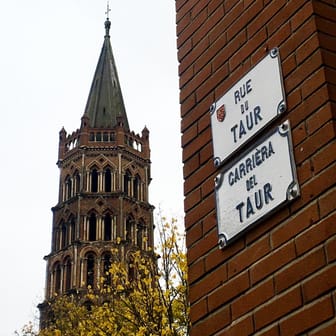Capitole de Toulouse





Ask ThatchGPT
Suggest a local expert to plan my trip
Suggest an unique itinerary for my France trip
What foods do France locals eat
What are some true hidden gems in France
Help me brainstorm trip ideas for France
Help me plan a family-friendly trip to France
What people say
Flávia Marques
"Many tourists overlook the fact that they can enter the Capitole. It’s not only worth visiting but also free! It’s open for visitors every day from 9 a.m. to 7 p.m. (10 a.m. to 6 p.m. on Sundays and holidays) and closed from December 25th to January 1st. Two of the three main rooms are also often used as wedding venues, and you can’t visit the building when there’s a wedding or other ceremony taking place inside. This means you may have a better chance of visiting the building if you go on a weekday.
The idea for Toulouse's Capitole was conceived in the 12th century, but there were already ruins of Roman structures on the site. Several different buildings have occupied the space. In the 18th century, those buildings were absorbed by a new construction project: The Capitole as we see it today. It would still take about 200 years to be finished and suffer many changes, especially during the French Revolution and Napoleon’s empire.
Even if you have never been to Toulouse, chances are you have walked through one of the Capitole's doorways. One of its ornate doorways is now decorating the entrance to one of the Louvre’s rooms in Paris!
When you enter the Capitole, you’ll be directed to a beautiful courtyard. The Escalier d'Honneur, on your right, will lead to the entrance to the actual building. This staircase's frescoes date to the beginning of the 20th century. As you ascend, the figures' paintings give you the impression that they are gazing at you. The largest painting depicts the Jeux Florals' inaugural session in 1324. The Jeux Florals are a poetry and literature competition. The ancient Roman goddess Flora served as the source of its name. The prizes are also shaped like flowers and made of precious metals. Dame Clémence Isaure, a beautiful lady who devoted her fortune to promoting the arts, is said to have founded this competition. She may or may not have existed: some claim she was a real person, while others claim she was the creation of a poets' association to justify the start of the Jeux Floraux. The people were eager to leave the barbarities of war behind and nurture art and poetry again after the Albigensian crusade, and the idea of a beautiful poetess who devoted her life to promoting literature is too charming to pass up. As a result, she became a sort of mythical figure in Toulouse. The painting on the ceiling depicts her triumphantly observing how the Jeux continue to exist today and are considered Europe's oldest literary society.
On top of the staircase, you find the first of three rooms full of incredible artwork:
1: Salon Paul Gervais, named after the painter, is decorated with his works, all of them allegories for love and all of them absolutely beautiful. I wish I could enter the world depicted in these paintings!
2: The Henri Martin Gallery (my favorite). Henri Martin, a Toulousian painter, created ten enormous canvases that are displayed in this gallery. These impressionist pieces depict various seasons in Toulouse. The light that emanates from each painting is simply gorgeous. I could stare at them for hours! The more well-known painting, "Les Rêveurs" ("The Dreamers"), depicts the artist's family and friends strolling along Toulouse's Garonne river.
3 - From the Salon des Illustres' windows, you can see Place du Capitole because it is situated along the Capitole's facade. Its name comes from the many busts of famous Toulousians. And the artwork in this room doesn’t end there. There are many beautiful frescoes and statues by various artists, and the room itself is gorgeous. If you’re visiting around Christmas time, keep in mind that there’s a massive Christmas tree in this room, so you can’t see part of it.
"
Read more in:
Mentioned in these guides
About Capitole de Toulouse
Get the inside scoop on Capitole de Toulouse from local experts, travel creators, and tastemakers. Browse genuine trip notes, Capitole de Toulouse reviews, photos, travel guides, and itineraries from real travelers and plan your trip with confidence.
Save this spot for later or start mapping out a new trip today
Try our AI Travel Assistant and get instant answers to any questions about your trip.
Ask ThatchGPT

